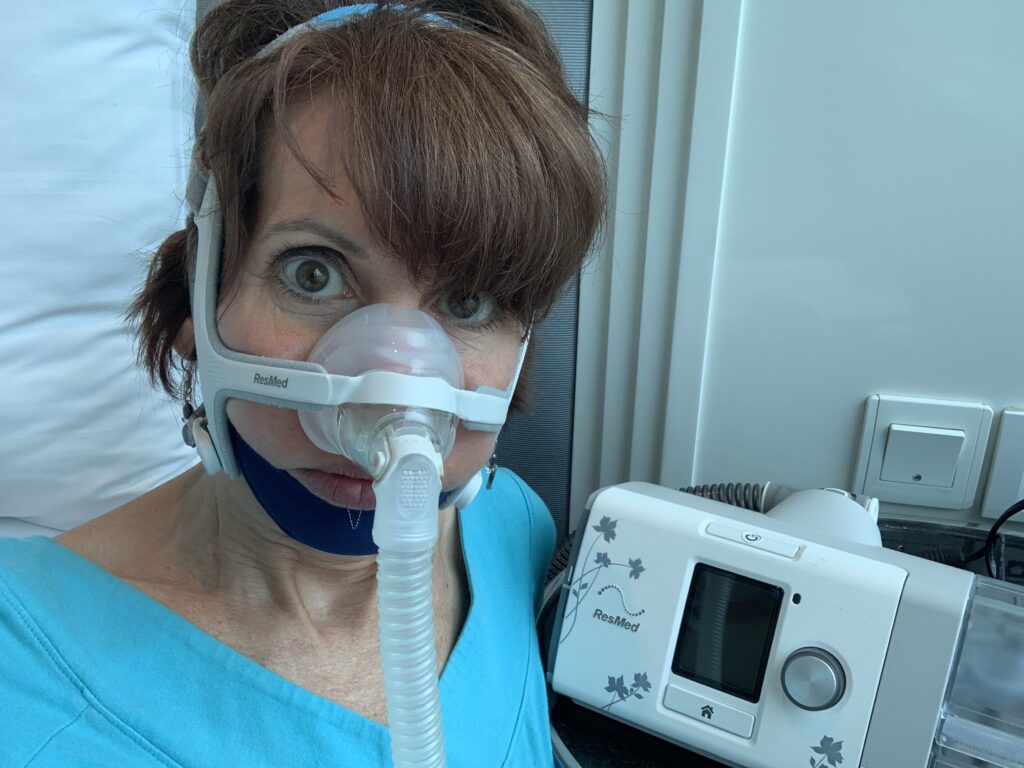When we first got to Bangkok, jet lag kicked me in the teeth. I kept waiting for my body to adjust to Thailand time, but the anguish ensued. Finally, there was no denying this was not your ordinary jetlag. Something else was wrong.
After bloodwork, ultrasounds, and other tests found no clinical reason for my insomnia, I sought help from a sleep specialist. Suspecting sleep apnea, he ordered a sleep study, which I did Friday night.
Sidebar: I was sitting at a nail salon Thursday afternoon, preparing for a mani-pedi when the hospital called to make sure I didn’t polish my nails before the sleep study. I told them I was literally just about to get my nails painted, and they said, “Well, just leave one fingernail clean.” The nail technician told me to return next week, and she’d finish the job. The hospital also told me I had to wash my hair but couldn’t use conditioner. So many mysteries! The nail salon posted my friend and me on their Facebook page. Note the wrong preposition. Grammar matters, friends!
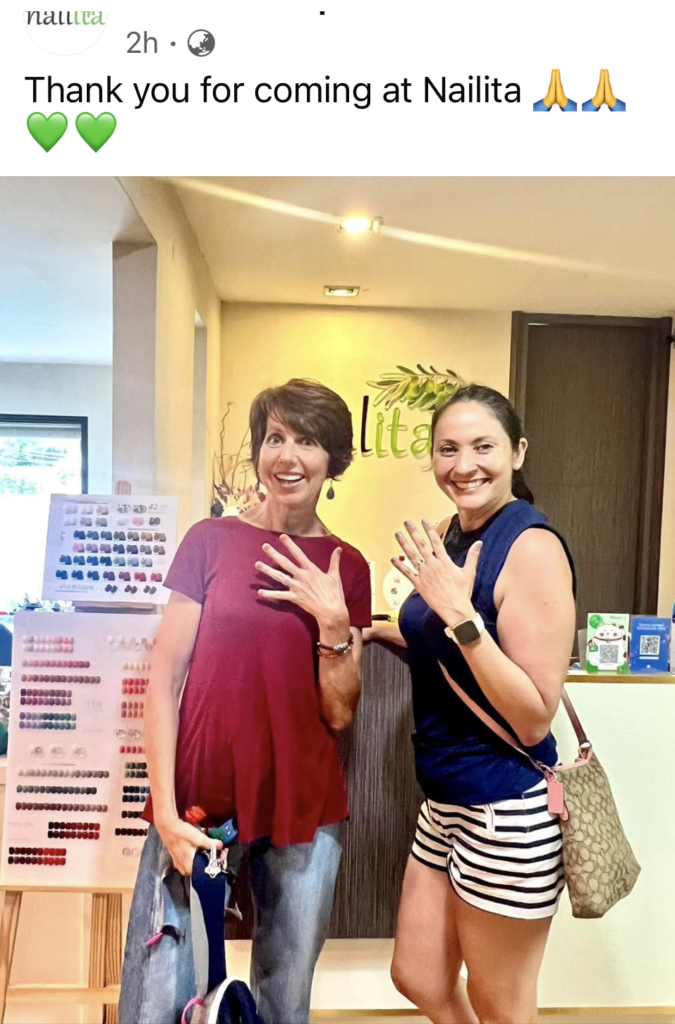
Friday after school, I grabbed a taxi to meet Tony for a nice dinner before my appointment.
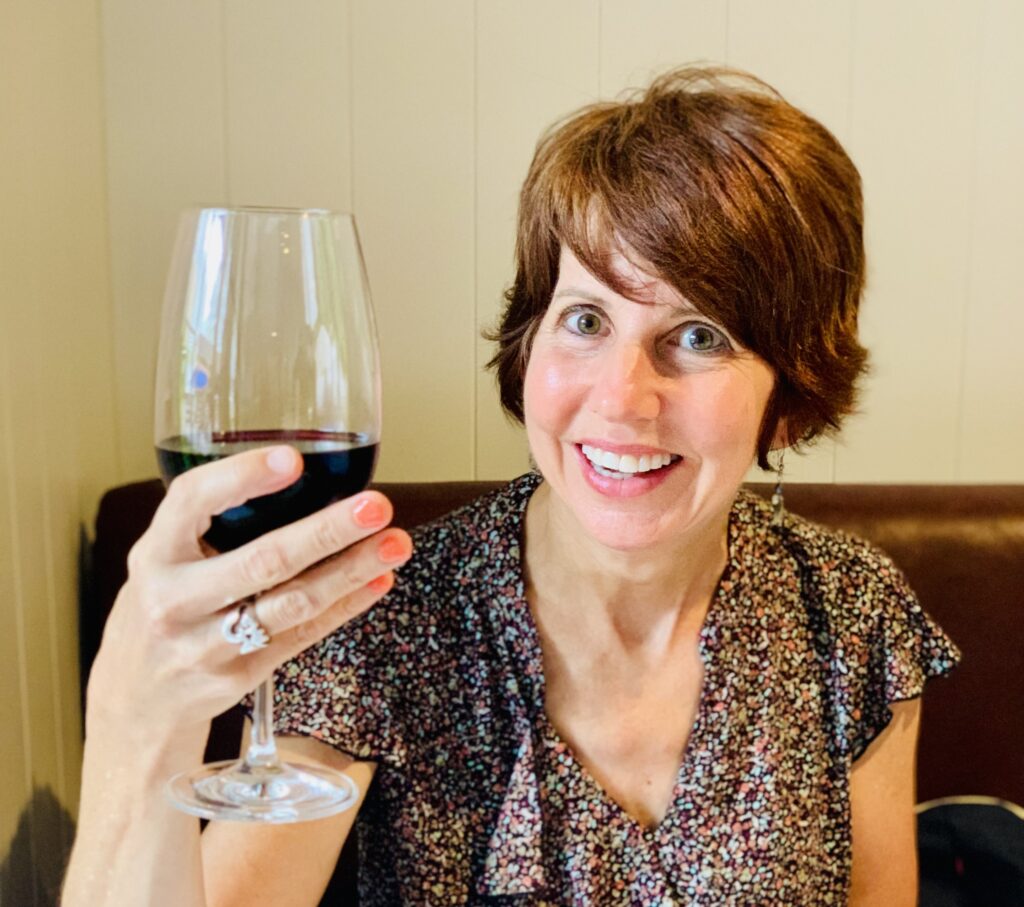
Faithful readers will know my affinity for Bumrungrad International Hospital. I’m so grateful for the world-class care and customer service.
Off to my room.
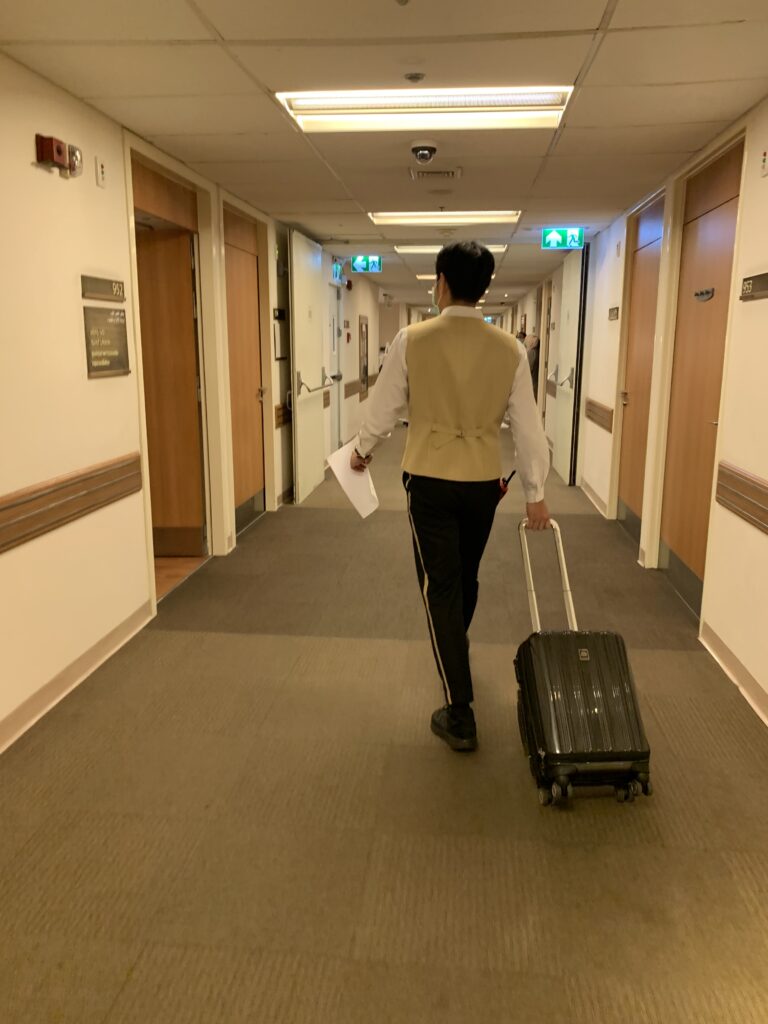
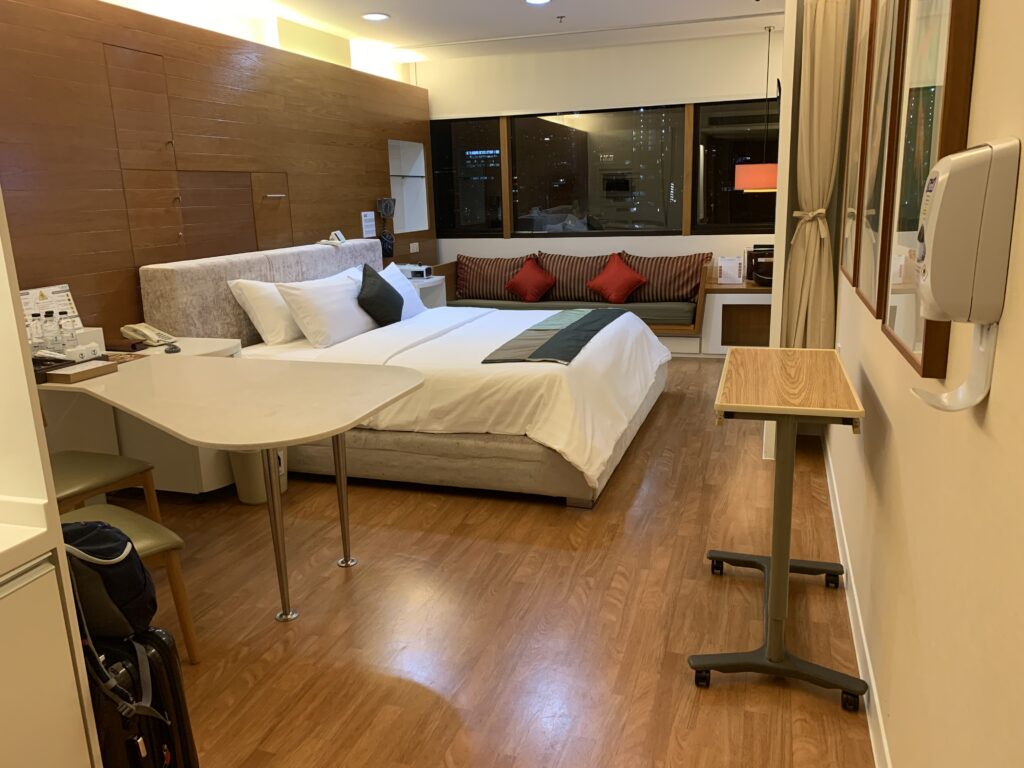
My lovely nurse, Julaluk, told me she had worked here for 10 years (even though she looked about 20 years old), and she clearly knew her way around the complicated world of preparing me for the night. As she stuck sensors all over my head, I suddenly understood why conditioner might render my hair too slippery for this procedure. And when she strapped a sensor to my index finger to monitor oxygen absorption, the need for an unpainted fingernail made sense. Mysteries solved!
Here’s what I looked like when she finally finished, along with a key to explain all the gear.
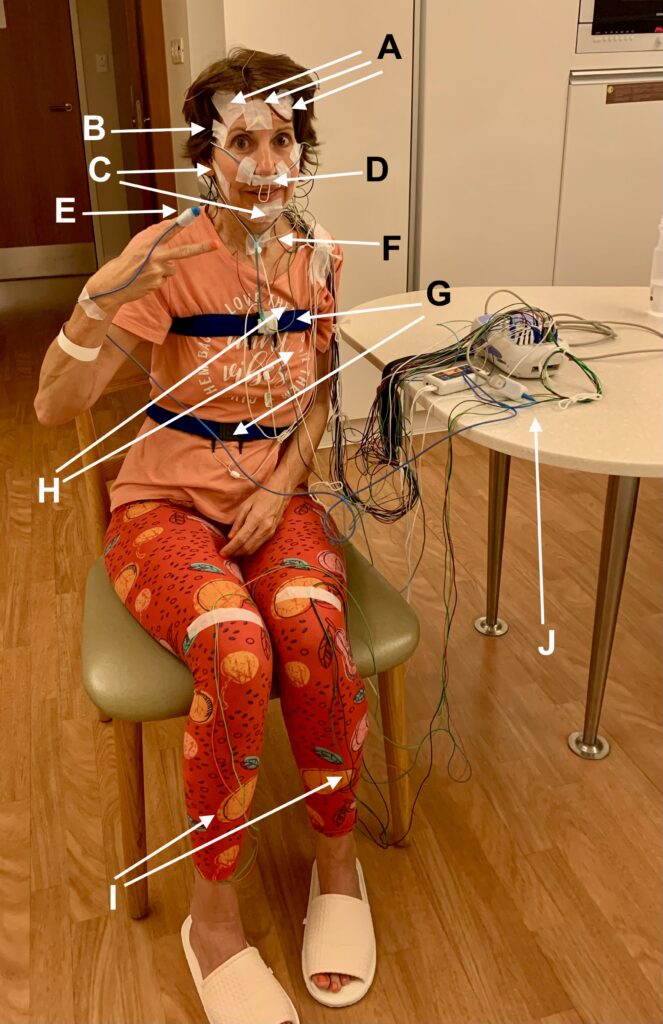
A: EEG measured the state of my sleep
B: measured eye movements to determine when I entered REM sleep
C: monitored whether I was grinding my teeth
D: measured airflow through my nose
E: measured oxygen saturation in my body
F: monitored whether I was snoring
G: belts measured chest and abdominal movement
H: sensors under my shirt monitored my heart rate
I: monitored muscle contractions in my legs
J: the machine collecting all the data, which stayed in bed with me all night and hung from my shoulder when I got up to use the bathroom
After serving me breakfast in the morning, Julaluk sent me off to meet with Dr. Sikawat Thanaviratananich. (Whew! Thai names are no joke.)
Dr. T spoke perfect English and explained that I have severe obstructive sleep apnea. He had previously shown me images online to clarify that obstructive sleep apnea occurs when the tongue, muscles, or other tissues block the upper airway, preventing the intake of adequate oxygen. When these episodes happen, the brain experiences a microarousal to trigger breathing again.
Most people have fewer than 5 microarousals per hour while sleeping. Last night’s sleep test found I experience about 39 per hour. Not cool. That explains why I never feel rested, Dr. T said.
He showed me a readout that shows a line with crests and dips, indicating I was taking normal breaths. Then suddenly the line goes almost flat for more than 30 seconds, suggesting I stopped breathing. Another blip shows my brain experiencing a microarousal, followed by a dramatic swing up in the breathing line. “See how you took a deep breath to compensate,” Dr. T explained.
Unfortunately, the only treatment at this time for severe obstructive sleep apnea is the use of a CPAP (continuous positive airway pressure) machine. I tried on three different versions last night.
“Goldilocks – the CPAP Edition”
The first one had the least invasive mask and blew air directly into my nostrils. However, it was nearly impossible to exhale without opening my mouth, which apparently is a no-no. The second one featured a mask that covered my nose and mouth. Breathing was easier, but the pressure on my face was uncomfortable. The third one fitted over my nose and felt a bit snoutlike. Very attractive. Still, of the three, I suppose this was my “just right.” Dr. T said the data showed I breathed best with this mask, although I still opened my mouth (which defeats the purpose). He wants me to wear a chin strap in addition to the machine. It just gets better and better.
Now that I know what’s going on with my wacked body, I am actually looking forward to strapping on this wretched machine. Like Goldilocks, I hope I can climb into bed and fall into a deep sleep for the first time in a long time. See you in dreamland! Zzzzzzzzzzzzzzzzzzz
